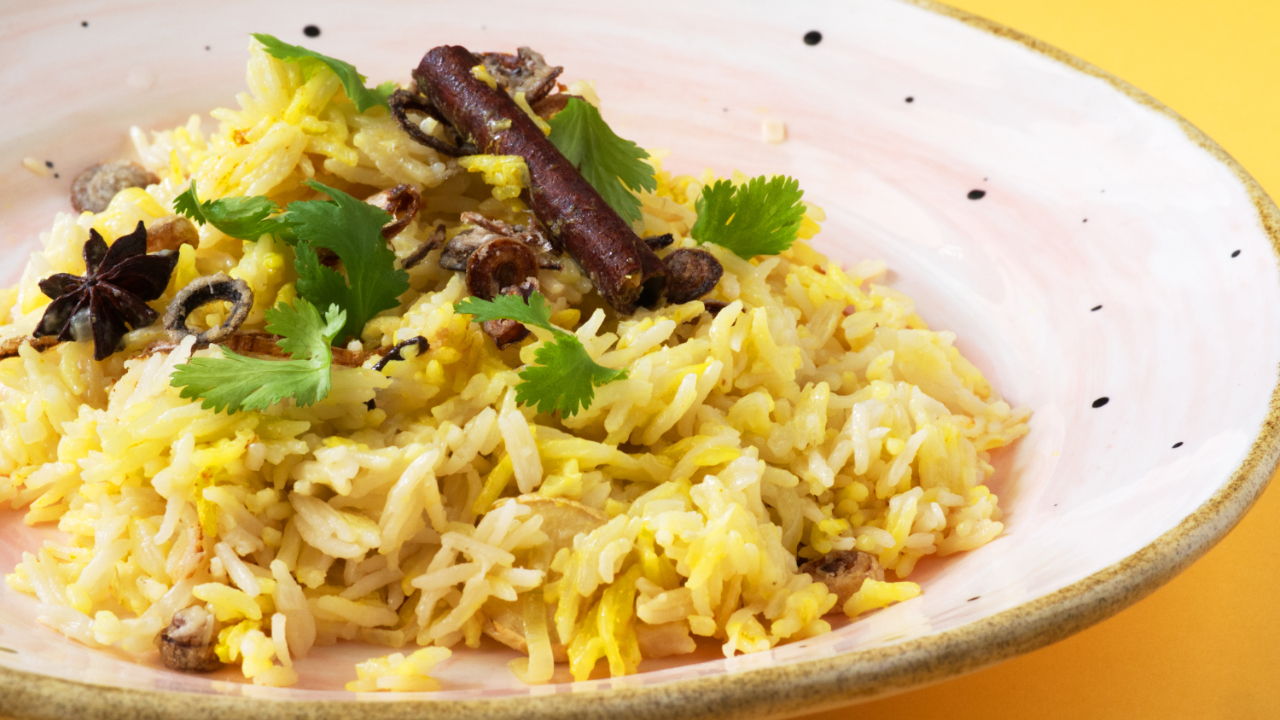Nasi Minyak is a fragrant rice dish enjoyed with curries and other side dishes. Literally translated from Malay, nasi minyak means oil rice. It is probably named after one of the main ingredients, clarified butter which is also known as ghee. It gives off a wonderful aroma which can be detected miles away. Besides that, the amazing combination of spices such as star anise, cinnamon, cardamom and others give the dish a fantastic fragrance and flavour.
Originally from Indonesia, nasi minyak is influenced by the culture of Middle Eastern cooking. The dish was special as it was only served to the Sultan of Palembang (in Indonesia) and the royal guests. As the times passed by, the dish became more common but it is still associated with big celebrations. In neighbouring countries like Singapore and Malaysia, nasi minyak is mainly served to commemorate weddings or the Muslim's thanksgiving ceremony.
Choice of rice grains used
Nasi minyak is made using 'Basmati' rice grains. When cooked, it has a fluffy texture and is less starchy compared to other types of rice. Basmati rice is able to soak up the flavours of the spices while keeping its firm shape resulting in the fluffiness.
Soaking the rice grains isn't required although some recipes might suggest doing so. The heat, milk and water will soften the rice during the cooking process, giving it the optimum texture. Soaking the rice before cooking may result in the rice being too soft and mushy.
Combination of ghee and other fats
Ghee or clarified butter has a stronger taste and smell compared to butter. Some may even find the smell offensive. Hence, adding ghee with other fats such as vegetable oil (e.g. margarine, peanut oil, rapeseed oil, sunflower oil) will tone down the strong smell. Another reason of adding the vegetable oil is to increase the smoke point which is when the heat begins to burn the oil.
Adding raisins and coriander
Sometimes, raisins are added for the extra crunch and sweetness or simply as a garnish. This is optional. However, the leaves and stems of the coriander are added to freshly cooked nasi minyak for its aroma and as garnishing.
Selection of dishes that goes with nasi minyak
Nasi Minyak goes very well with lots of dishes that are filled with spice. Having spices in a dish doesn't mean that it needs to be spicy. It's more about the creamy flavour in the dish. Hence, curry dishes such as curry chicken, ayam masak merah (spicy tomato chicken) and chicken rendang are great selection of dishes to be enjoyed together with nasi minyak.

